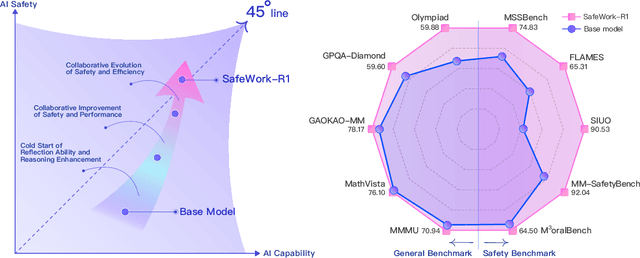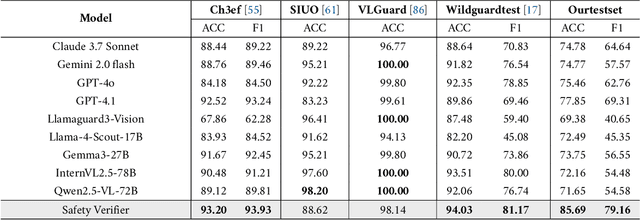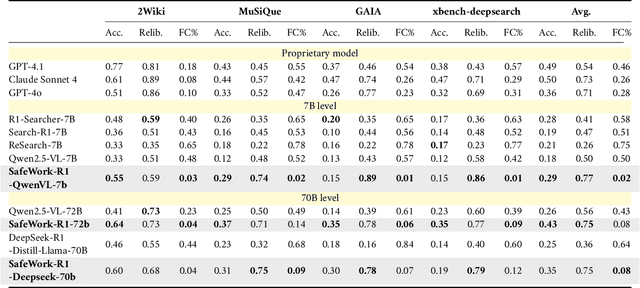Jie Li
School of Computer and Information, Hefei University of Technology, China
BoRe-Depth: Self-supervised Monocular Depth Estimation with Boundary Refinement for Embedded Systems
Nov 06, 2025Abstract:Depth estimation is one of the key technologies for realizing 3D perception in unmanned systems. Monocular depth estimation has been widely researched because of its low-cost advantage, but the existing methods face the challenges of poor depth estimation performance and blurred object boundaries on embedded systems. In this paper, we propose a novel monocular depth estimation model, BoRe-Depth, which contains only 8.7M parameters. It can accurately estimate depth maps on embedded systems and significantly improves boundary quality. Firstly, we design an Enhanced Feature Adaptive Fusion Module (EFAF) which adaptively fuses depth features to enhance boundary detail representation. Secondly, we integrate semantic knowledge into the encoder to improve the object recognition and boundary perception capabilities. Finally, BoRe-Depth is deployed on NVIDIA Jetson Orin, and runs efficiently at 50.7 FPS. We demonstrate that the proposed model significantly outperforms previous lightweight models on multiple challenging datasets, and we provide detailed ablation studies for the proposed methods. The code is available at https://github.com/liangxiansheng093/BoRe-Depth.
Less is More: Denoising Knowledge Graphs For Retrieval Augmented Generation
Oct 16, 2025Abstract:Retrieval-Augmented Generation (RAG) systems enable large language models (LLMs) instant access to relevant information for the generative process, demonstrating their superior performance in addressing common LLM challenges such as hallucination, factual inaccuracy, and the knowledge cutoff. Graph-based RAG further extends this paradigm by incorporating knowledge graphs (KGs) to leverage rich, structured connections for more precise and inferential responses. A critical challenge, however, is that most Graph-based RAG systems rely on LLMs for automated KG construction, often yielding noisy KGs with redundant entities and unreliable relationships. This noise degrades retrieval and generation performance while also increasing computational cost. Crucially, current research does not comprehensively address the denoising problem for LLM-generated KGs. In this paper, we introduce DEnoised knowledge Graphs for Retrieval Augmented Generation (DEG-RAG), a framework that addresses these challenges through: (1) entity resolution, which eliminates redundant entities, and (2) triple reflection, which removes erroneous relations. Together, these techniques yield more compact, higher-quality KGs that significantly outperform their unprocessed counterparts. Beyond the methods, we conduct a systematic evaluation of entity resolution for LLM-generated KGs, examining different blocking strategies, embedding choices, similarity metrics, and entity merging techniques. To the best of our knowledge, this is the first comprehensive exploration of entity resolution in LLM-generated KGs. Our experiments demonstrate that this straightforward approach not only drastically reduces graph size but also consistently improves question answering performance across diverse popular Graph-based RAG variants.
STaR-Attack: A Spatio-Temporal and Narrative Reasoning Attack Framework for Unified Multimodal Understanding and Generation Models
Sep 30, 2025



Abstract:Unified Multimodal understanding and generation Models (UMMs) have demonstrated remarkable capabilities in both understanding and generation tasks. However, we identify a vulnerability arising from the generation-understanding coupling in UMMs. The attackers can use the generative function to craft an information-rich adversarial image and then leverage the understanding function to absorb it in a single pass, which we call Cross-Modal Generative Injection (CMGI). Current attack methods on malicious instructions are often limited to a single modality while also relying on prompt rewriting with semantic drift, leaving the unique vulnerabilities of UMMs unexplored. We propose STaR-Attack, the first multi-turn jailbreak attack framework that exploits unique safety weaknesses of UMMs without semantic drift. Specifically, our method defines a malicious event that is strongly correlated with the target query within a spatio-temporal context. Using the three-act narrative theory, STaR-Attack generates the pre-event and the post-event scenes while concealing the malicious event as the hidden climax. When executing the attack strategy, the opening two rounds exploit the UMM's generative ability to produce images for these scenes. Subsequently, an image-based question guessing and answering game is introduced by exploiting the understanding capability. STaR-Attack embeds the original malicious question among benign candidates, forcing the model to select and answer the most relevant one given the narrative context. Extensive experiments show that STaR-Attack consistently surpasses prior approaches, achieving up to 93.06% ASR on Gemini-2.0-Flash and surpasses the strongest prior baseline, FlipAttack. Our work uncovers a critical yet underdeveloped vulnerability and highlights the need for safety alignments in UMMs.
BAPFL: Exploring Backdoor Attacks Against Prototype-based Federated Learning
Sep 16, 2025Abstract:Prototype-based federated learning (PFL) has emerged as a promising paradigm to address data heterogeneity problems in federated learning, as it leverages mean feature vectors as prototypes to enhance model generalization. However, its robustness against backdoor attacks remains largely unexplored. In this paper, we identify that PFL is inherently resistant to existing backdoor attacks due to its unique prototype learning mechanism and local data heterogeneity. To further explore the security of PFL, we propose BAPFL, the first backdoor attack method specifically designed for PFL frameworks. BAPFL integrates a prototype poisoning strategy with a trigger optimization mechanism. The prototype poisoning strategy manipulates the trajectories of global prototypes to mislead the prototype training of benign clients, pushing their local prototypes of clean samples away from the prototypes of trigger-embedded samples. Meanwhile, the trigger optimization mechanism learns a unique and stealthy trigger for each potential target label, and guides the prototypes of trigger-embedded samples to align closely with the global prototype of the target label. Experimental results across multiple datasets and PFL variants demonstrate that BAPFL achieves a 35\%-75\% improvement in attack success rate compared to traditional backdoor attacks, while preserving main task accuracy. These results highlight the effectiveness, stealthiness, and adaptability of BAPFL in PFL.
EEG-FM-Bench: A Comprehensive Benchmark for the Systematic Evaluation of EEG Foundation Models
Aug 25, 2025Abstract:Electroencephalography (EEG) foundation models are poised to significantly advance brain signal analysis by learning robust representations from large-scale, unlabeled datasets. However, their rapid proliferation has outpaced the development of standardized evaluation benchmarks, which complicates direct model comparisons and hinders systematic scientific progress. This fragmentation fosters scientific inefficiency and obscures genuine architectural advancements. To address this critical gap, we introduce EEG-FM-Bench, the first comprehensive benchmark for the systematic and standardized evaluation of EEG foundation models (EEG-FMs). Our contributions are threefold: (1) we curate a diverse suite of downstream tasks and datasets from canonical EEG paradigms, implementing standardized processing and evaluation protocols within a unified open-source framework; (2) we benchmark prominent state-of-the-art foundation models to establish comprehensive baseline results for a clear comparison of the current landscape; (3) we perform qualitative analyses of the learned representations to provide insights into model behavior and inform future architectural design. Through extensive experiments, we find that fine-grained spatio-temporal feature interaction, multitask unified training and neuropsychological priors would contribute to enhancing model performance and generalization capabilities. By offering a unified platform for fair comparison and reproducible research, EEG-FM-Bench seeks to catalyze progress and guide the community toward the development of more robust and generalizable EEG-FMs. Code is released at https://github.com/xw1216/EEG-FM-Bench.
Disentangling Multiplex Spatial-Temporal Transition Graph Representation Learning for Socially Enhanced POI Recommendation
Aug 11, 2025Abstract:Next Point-of-Interest (POI) recommendation is a research hotspot in business intelligence, where users' spatial-temporal transitions and social relationships play key roles. However, most existing works model spatial and temporal transitions separately, leading to misaligned representations of the same spatial-temporal key nodes. This misalignment introduces redundant information during fusion, increasing model uncertainty and reducing interpretability. To address this issue, we propose DiMuST, a socially enhanced POI recommendation model based on disentangled representation learning over multiplex spatial-temporal transition graphs. The model employs a novel Disentangled variational multiplex graph Auto-Encoder (DAE), which first disentangles shared and private distributions using a multiplex spatial-temporal graph strategy. It then fuses the shared features via a Product of Experts (PoE) mechanism and denoises the private features through contrastive constraints. The model effectively captures the spatial-temporal transition representations of POIs while preserving the intrinsic correlation of their spatial-temporal relationships. Experiments on two challenging datasets demonstrate that our DiMuST significantly outperforms existing methods across multiple metrics.
MemoryKT: An Integrative Memory-and-Forgetting Method for Knowledge Tracing
Aug 11, 2025Abstract:Knowledge Tracing (KT) is committed to capturing students' knowledge mastery from their historical interactions. Simulating students' memory states is a promising approach to enhance both the performance and interpretability of knowledge tracing models. Memory consists of three fundamental processes: encoding, storage, and retrieval. Although forgetting primarily manifests during the storage stage, most existing studies rely on a single, undifferentiated forgetting mechanism, overlooking other memory processes as well as personalized forgetting patterns. To address this, this paper proposes memoryKT, a knowledge tracing model based on a novel temporal variational autoencoder. The model simulates memory dynamics through a three-stage process: (i) Learning the distribution of students' knowledge memory features, (ii) Reconstructing their exercise feedback, while (iii) Embedding a personalized forgetting module within the temporal workflow to dynamically modulate memory storage strength. This jointly models the complete encoding-storage-retrieval cycle, significantly enhancing the model's perception capability for individual differences. Extensive experiments on four public datasets demonstrate that our proposed approach significantly outperforms state-of-the-art baselines.
SafeWork-R1: Coevolving Safety and Intelligence under the AI-45$^{\circ}$ Law
Jul 24, 2025



Abstract:We introduce SafeWork-R1, a cutting-edge multimodal reasoning model that demonstrates the coevolution of capabilities and safety. It is developed by our proposed SafeLadder framework, which incorporates large-scale, progressive, safety-oriented reinforcement learning post-training, supported by a suite of multi-principled verifiers. Unlike previous alignment methods such as RLHF that simply learn human preferences, SafeLadder enables SafeWork-R1 to develop intrinsic safety reasoning and self-reflection abilities, giving rise to safety `aha' moments. Notably, SafeWork-R1 achieves an average improvement of $46.54\%$ over its base model Qwen2.5-VL-72B on safety-related benchmarks without compromising general capabilities, and delivers state-of-the-art safety performance compared to leading proprietary models such as GPT-4.1 and Claude Opus 4. To further bolster its reliability, we implement two distinct inference-time intervention methods and a deliberative search mechanism, enforcing step-level verification. Finally, we further develop SafeWork-R1-InternVL3-78B, SafeWork-R1-DeepSeek-70B, and SafeWork-R1-Qwen2.5VL-7B. All resulting models demonstrate that safety and capability can co-evolve synergistically, highlighting the generalizability of our framework in building robust, reliable, and trustworthy general-purpose AI.
TELEVAL: A Dynamic Benchmark Designed for Spoken Language Models in Chinese Interactive Scenarios
Jul 24, 2025Abstract:Spoken language models (SLMs) have seen rapid progress in recent years, along with the development of numerous benchmarks for evaluating their performance. However, most existing benchmarks primarily focus on evaluating whether SLMs can perform complex tasks comparable to those tackled by large language models (LLMs), often failing to align with how users naturally interact in real-world conversational scenarios. In this paper, we propose TELEVAL, a dynamic benchmark specifically designed to evaluate SLMs' effectiveness as conversational agents in realistic Chinese interactive settings. TELEVAL defines three evaluation dimensions: Explicit Semantics, Paralinguistic and Implicit Semantics, and System Abilities. It adopts a dialogue format consistent with real-world usage and evaluates text and audio outputs separately. TELEVAL particularly focuses on the model's ability to extract implicit cues from user speech and respond appropriately without additional instructions. Our experiments demonstrate that despite recent progress, existing SLMs still have considerable room for improvement in natural conversational tasks. We hope that TELEVAL can serve as a user-centered evaluation framework that directly reflects the user experience and contributes to the development of more capable dialogue-oriented SLMs.
BoSS: Beyond-Semantic Speech
Jul 23, 2025Abstract:Human communication involves more than explicit semantics, with implicit signals and contextual cues playing a critical role in shaping meaning. However, modern speech technologies, such as Automatic Speech Recognition (ASR) and Text-to-Speech (TTS) often fail to capture these beyond-semantic dimensions. To better characterize and benchmark the progression of speech intelligence, we introduce Spoken Interaction System Capability Levels (L1-L5), a hierarchical framework illustrated the evolution of spoken dialogue systems from basic command recognition to human-like social interaction. To support these advanced capabilities, we propose Beyond-Semantic Speech (BoSS), which refers to the set of information in speech communication that encompasses but transcends explicit semantics. It conveys emotions, contexts, and modifies or extends meanings through multidimensional features such as affective cues, contextual dynamics, and implicit semantics, thereby enhancing the understanding of communicative intentions and scenarios. We present a formalized framework for BoSS, leveraging cognitive relevance theories and machine learning models to analyze temporal and contextual speech dynamics. We evaluate BoSS-related attributes across five different dimensions, reveals that current spoken language models (SLMs) are hard to fully interpret beyond-semantic signals. These findings highlight the need for advancing BoSS research to enable richer, more context-aware human-machine communication.
 Add to Chrome
Add to Chrome Add to Firefox
Add to Firefox Add to Edge
Add to Edge